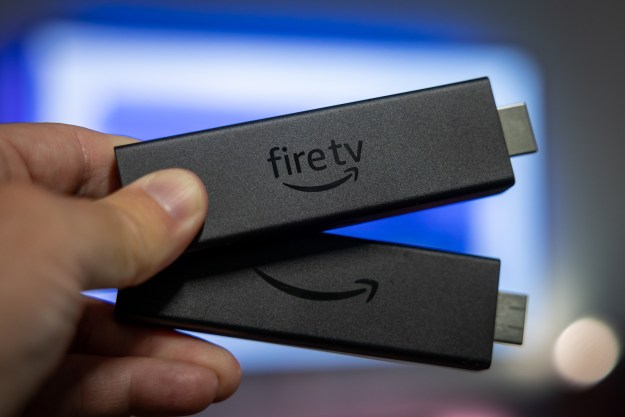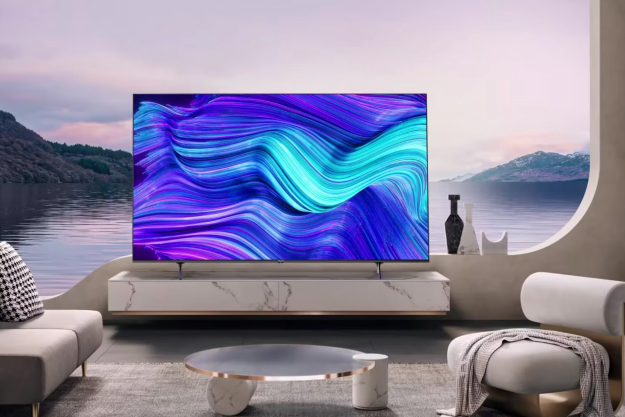Whether you’ve got a top-tier listening setup or you’re a casual analog listener, getting the most out of your vinyl collection requires more than just putting your record player on a table and dropping the needle. Without proper setup, your turntable could be picking up noise, jumping out of grooves, and even damaging your records.
Essentials for Record Store Day
- How to clean vinyl records
- The 10 best albums for Record Store Day
- Crosley C6 Turntable review
- Urban Legends wants to bring Migos and millennials into vinyl
We got together with professional audio guru Gary Alpern of True Audiophile to learn more about how to properly set up a record player. If your record player has never been properly set up, these small adjustments could make your prized audio system sound much sweeter, as well as keeping your precious records protected. This is a fairly complex process, so it’s not for the timid, and most turntable shops will also adjust the player for you at for a minimal fee. If you’re a proper DIYer, however, this is the guide you’ve been looking for.
We also worked with True Audiophile to show you how to properly clean and maintain your growing collection. If you’re interested in learning more about how to collect and store records in the first place, be sure to also check out our article on how to build and preserve a vinyl collection.
Confused about some terminology below? Check out the glossary at the bottom, and be sure to comment with any questions!
Level Your Table
The first thing you want to do to make sure your records are spinning right is to level your table on both the X and Y axis. To do this, place a level on your turntable platter, face it towards you and adjust the feet of your table — virtually all tables have adjustable feet, believe it or not — until it reads level. Then, keeping the level on the platter, spin it 90 degrees so that it is perpendicular to your first reading. Level the table on this axis, too. Before you move on, be sure to check the original axis again to make sure it is still level. Continue adjusting each axis until the table reads level in both directions.
Adjust your tracking force
Every turntable comes with a manufacturer-suggested tracking force, which is the amount of weight put on the tonearm to keep the needle in a groove and get the best possible sound.
As shown in the video above, the easiest way to adjust your tracking force is to balance your tonearm (make it float just above the turntable by twisting the counterweight), and then zero out the tracking force gauge that typically appears on the front of the counterweight. From there, turn the counterweight and the dial counterclockwise until the dial reads at the lowest end of the manufacturer-supplied tracking force spectrum. Once you’re on the low end of the range, try adding a small amount of pressure and listening until you find the audible sweet spot.
Some counterweights don’t come with tracking force gauges built-in, so you’ll have to use a to measure the downward force. Digital scales can be found for very cheap online, and can make things easier (and more accurate) than trusting a dial.
Set the tangential alignment curve
When the master for your record was cut, it was cut by a lathe that slowly spun inwards toward the middle of the record. To get the best possible sound out of your record, you want your tonearm to mimic the “tangential alignment” curve of the lathe that cut it. Setting up the tangential alignment typically requires moving the cartridge either back or forward in the headshell. If you don’t have a custom alignment tool like the one seen in the video above, the best way to set your curve is to use your ear. Start with your cartridge in the middle of your headshell, and move it slightly toward you or away from you, then listen. Find the place your favorite albums sound best and stick with it.
Set your zenith
You always want the stylus/needle of your cartridge to be perfectly perpendicular to the groove of a record. Because many cartridges are handmade, many do not perfectly line up on center from the factory. You can adjust your cartridge using the screws in the headshell to make sure that it is perfectly on center and perpendicular — the zenith. When you do, be sure to look exclusively at the needle/stylus because that is the only point that matters. Even if the cartridge looks odd, as long as your needle is on center and perpendicular, it’s good.
Clock your speed
You’ll want to make sure your table is running at the proper speed of 33 1/3 RPM (or 45 RPM for 45s) when spinning. Many tables have built-in strobe lights and speed adjustments to make sure that things are perfect, but some do not. If you want to make sure your table is running in tip-top shape, you can buy an aftermarket speed-testing kit to check it. The key is to make sure your table is properly lubricated. Every table has a bearing that spins at a constant speed, and if this bearing is gunked up, the pitch of your records can be affected. If your turntable’s speed isn’t accurate and you don’t have a speed adjustment control, you can try lubricating this bearing. Sometimes a worn belt can also impact the speed — replacement belts can almost always be purchased for belt-driven tables, but you may need to do some Googling.
Set your vertical tracking angle and stylus rake angle
Every tonearm has a different angle of descent when it hits a record. If your turntable allows for you to adjust it, you can change the angle of your tonearm until you find the spot that you think sounds best. Some people say the best angle is the same one as the original cutting lathe, but others differ on that point. As usual, it’s best to use your ears for what you think sounds best.
Set your azimuth
Azimuth is the amount your needle leans left or right in the groove of a record. In a perfect world, you want your record stylus/needle to sit perfectly perpendicular to the surface of the groove so that it picks up both left and right channels of audio separately and equally. If the chamber of your tonearm is leaning left or right, it will pick up more or less of each channel as it leans into one side of the groove or another, providing a muddier stereo image and, in rare cases, no stereo at all. You want to adjust your tonearm so that you have maximum channel separation by making sure it isn’t leaning left or right. You can use a special meter and a record with test tones to set this up, but the best way to check is to use your ears — especially because you’re probably not going to drop the big bucks on a meter and test records.
Set your anti-skate
The grooves of a record are concentric and are constantly tugging your record stylus/needle toward the center. Anti-skate is the adjustment that allows you to change the amount of horizontal force being placed on the stylus/needle, keeping the stylus in the center of the groove. Check your anti-skate in the first third, middle third, and last third of a record, and use your ears to make sure it sounds good. Start on the lower side of the manufacturer-recommended settings, and slowly add anti-skate force until it sounds best to you — with the least amount of distortion being best. Anti-skate adjustment is almost always located in the back of the tonearm, behind the bearing, assuring it uses the least amount of pressure for the maximum amount of benefit.
Glossary of Terms:
Plinth: The base of the turntable.
Platter: The spinning disc that records lay on top of.
Tonearm: The arm of the turntable that floats above a record, and culminates in the stylus/needle, which physically sits in the grooves on the vinyl.
Counterweight: The round adjustable weight that allows you to change the downward pressure of the tonearm.
Tracking force gauge: A circular gauge that spins freely in front of the counterweight that can be turned in tandem with the counterweight to determine downward pressure.
Headshell: The end of the tonearm that holds the cartridge in place, and connects the cartridge and stylus to the tonearm above.
Anti-Skate: An adjustment that allows you to change the amount of horizontal force that’s being applied to the tonearm. Counteracts the force of the tonearm being pulled into the center of the turntable and the sidewall of the groove.
Cartridge: Holds the stylus/needle, and converts its movement into an electrical signal.
Stylus/Needle: The tiny physical object that sits in the groove of a record and reads the analog audio material.
Editors' Recommendations
- The best turntables of 2024 to spin your vinyl records
- The Sound Burger is back. Audio-Technica revives its vinyl Walkman for a new generation
- How does a record player work?




